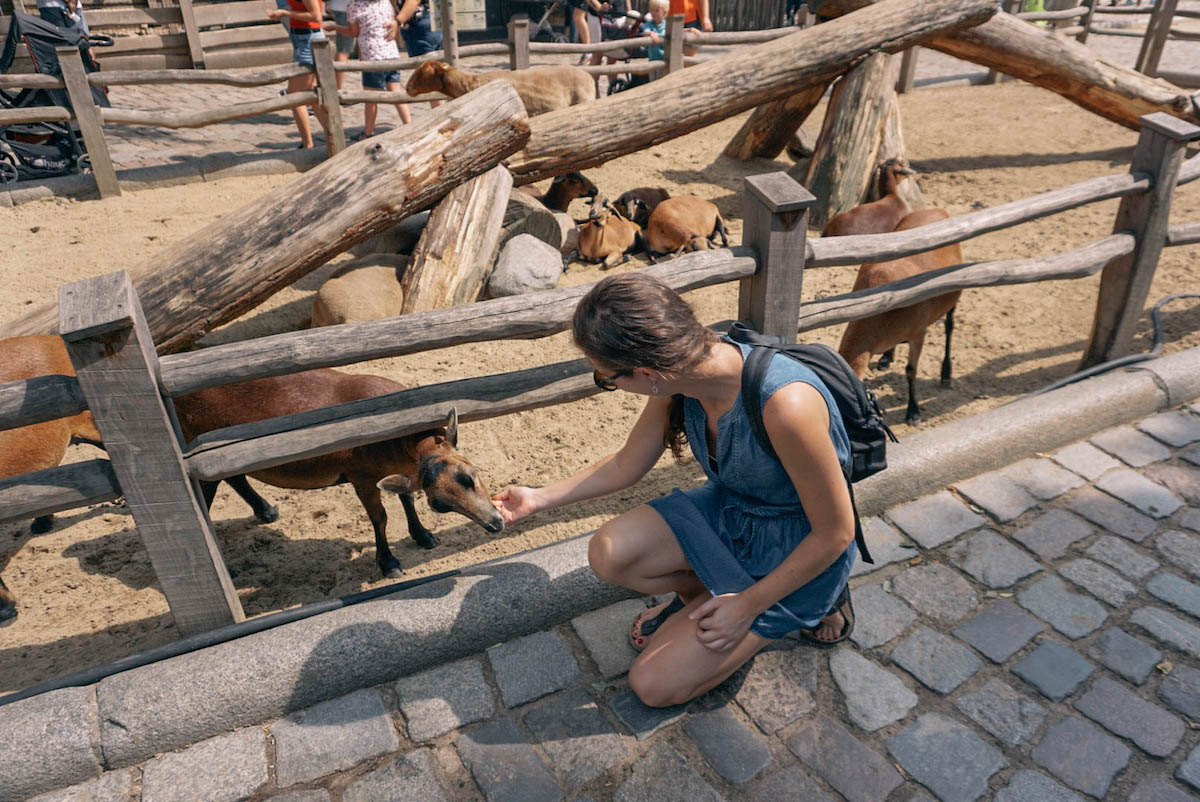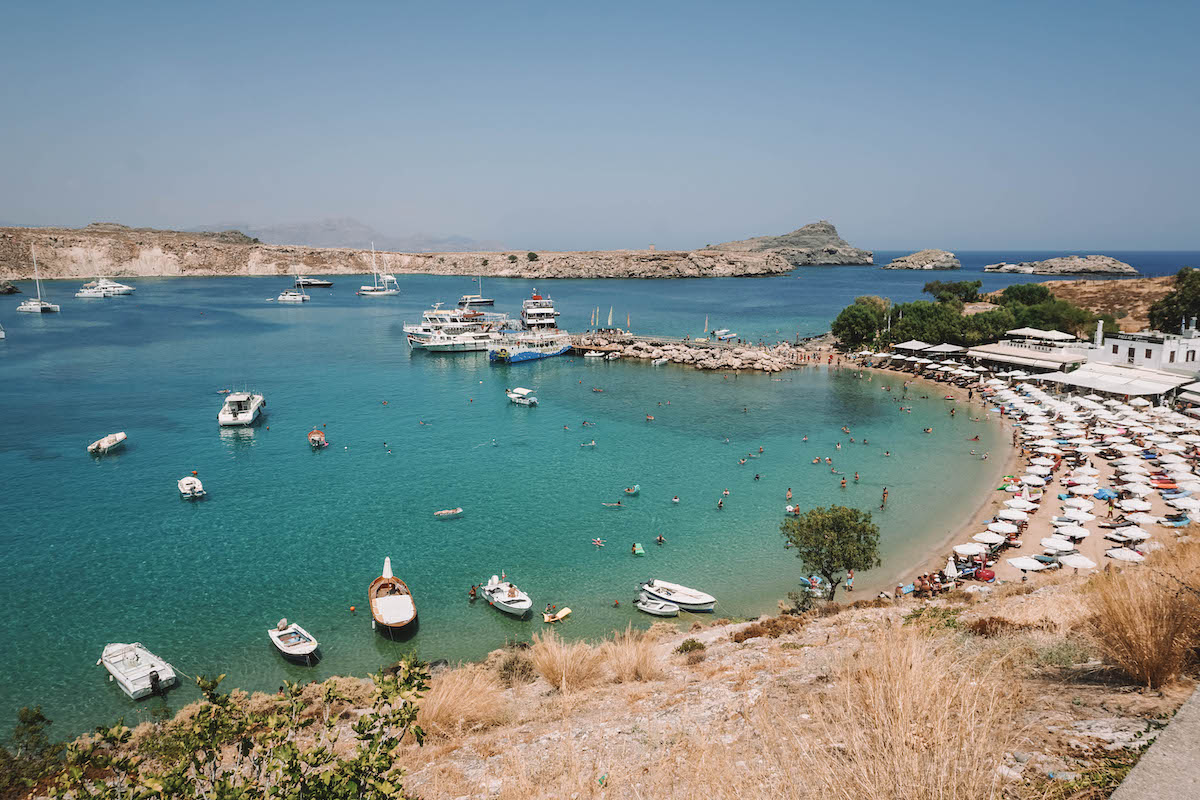I’m by no means perfect when it comes to being a sustainable traveler, but I think every bit counts. With that in mind, here are my top tips for traveling more responsibly!
While planning our trip to the Netherlands, my friend Paulina mentioned that she had already scouted out train prices. She showed me the time table she’d found online and began chattering happily away about the best times to travel to and from Rotterdam. Initially, I was a bit confused. Why would we bother taking a 7-hour train ride from Berlin to the Netherlands when we could much more easily fly there in a fraction of the time? “Because it’s better for the environment,” Paulina explained. I won’t lie, I felt quite guilty for overlooking Mother Earth when making our travel plans. As much as I try to do my part for the environment when I’m at home — recycling as much as possible, bringing reusable bags to the grocery store, and so forth — Paulina’s comment reminded me that I can be doing so much more to travel sustainably.
After that conversation, I started brainstorming all the ways I could be a more responsible traveler. Initially, my research overwhelmed me. There are so many eco-conscious travel bloggers out there that make reducing their carbon footprint while traveling look so easy, but their lifestyles and travel practices are so different than my own that I felt like I could never reach their level of sustainability. But after mulling the problem over for a few days, I came to the conclusion that doing my part to be a more sustainable traveler — however much or little I’m able to do for the environment — is better than doing nothing at all.
With that being said, I feel like I should give a quick disclaimer that I’m far from perfect when it comes to sustainable travel. I’ve listed some simple ways you can be a more responsible traveler below, but I don’t do everything on this list each time I travel. However, I hope this post inspires you to be more eco-friendly on your next vacation in any way you can. If there are any other tips you have for traveling more sustainably, please leave me a comment down below! I’m still figuring these things out myself, so any additional sustainability tips you can share are appreciated.
Travel via Car or Train When Possible
Airplanes emit a huge amount of carbon dioxide, far more than cars or trains. Although CO2 emissions per person vary depending on where in the plane you sit (i.e. first-class versus economy) and the type of plane you’re on, traveling via train or automobile is the more sustainable travel choice overall. I know plane travel is sometimes unavoidable, but before booking your next flight it’s worth checking to see how much longer it’d take for you to hop on a train instead. Traveling in a train or car may also be the less expensive route, so crunch the numbers too before deciding how you want to travel.
If you need to fly to your destination, try taking as direct a route as possible. According to the BBC, take off and landing uses more fuel than cruising, so the fewer flights you take when traveling from Point A to Point B, the better.
Reduce Your Own Waste
No matter where in the world you’re traveling to, you can easily reduce the amount of waste you produce. If you’ll be doing some shopping while abroad (either for groceries or souvenirs), pack a reusable bag in your suitcase and bring it along with you during your adventures. You may want to invest in a set of reusable cutlery and a straw, just in case you’ll be grabbing food from someplace that only has plastic cutlery. Reusable water bottles have always been a must for me, simply because buying water bottles is expensive (not to mention super wasteful!). You should also be careful to dispose of your trash properly while abroad — different countries separate trash and recycling in various ways, and in general you don’t want to leave behind any litter during your travels.
Obviously, there are so many more ways you can reduce your personal waste while traveling, but these are the main things I do to help out Mother Earth!
Be Mindful of Animal Attractions
Whether you’re enjoying a staycation near your hometown or you’re traveling abroad, it’s important to thoroughly research any animal sanctuaries and zoos you plan on visiting. When thinking of travel through the lens of sustainability, it’s easy to focus solely on the planet and overlook the animals that inhabit it. But animal tourism is a huge trade worldwide, so be sure to factor it in when planning your trip. In general, you should avoid any animal interaction that includes you being able to feed or pet an animal, eat next to animals (i.e. cat cafes or something similar), or ride them.
When my family traveled to Japan, I was so excited to visit a cat café there. But when we finally went into one, I felt sick to my stomach. The cats were all incredibly relaxed to the point that I was worried they’d been doped so they would remain calm when the tourists petted them. I hadn’t expected the cats to behave that way, because the cat café I’d visited in Austin, Texas a few years prior had been focused on finding adopters for the cats and had seemed like a safe haven for the kitties. Was either place “okay” to visit? Honestly, I’m not sure. Which is why I’m now much more careful when visiting any kind of animal attraction while I’m traveling (including zoos) and try to do my research beforehand.
Shop Locally for Souvenirs
Another simple way to be a more responsible traveler is to shop locally whenever possible. Buying souvenirs from local boutiques and artists will better support the local economy, plus you’ll be reducing your carbon footprint since the items you’re buying weren’t shipped to the area from faraway places like China. With that being said, I actually find it difficult to shop locally in larger cities. It’s ironic, because the bigger the city, the more room there is for local entrepreneurs to set up shop and sell their goods. But bigger cities are also home to more chain stores, which often dominate the shopping scene in the area.
If there’s a local product I know I want to buy while abroad, I’ll do a quick Google search ahead of time to see what stores in the area sell what I’m looking for. I’ll also ask shop owners where their goods were sourced from and always read labels on the packaging to see if items were shipped from abroad.
Use Public Transportation Within Cities
Another sustainable travel practice that’s always come naturally to me is to use public transportation whenever possible. Public transportation is more environmentally friendly than hailing a cab or an Uber, and it’s much cheaper, to boot. Busses, street cars, and subways will be running on schedule whether you’re riding them or not, so you might as well utilize the local transport system. I typically buy a day- or week-long transportation pass when I’m in a new city since they’re a better deal than paying for individual rides every time. I also follow a general rule of thumb while traveling: if getting from one spot to another will take less than 20 minutes of walking, I always opt to travel on foot instead of taking the bus. Again, I know this isn’t a huge way to help the environment, but I think every little thing helps!
Practice “Leave No Trace”
Anytime you partake in an outdoor activity (think: hiking, white water rafting, camping, etc.), you should practice the principles of “Leave No Trace.” REI has a great article on their website that outlines the seven tenents of the leave no trace philosophy, but the main point is this: after enjoying the great outdoors, it’s important that you leave the place exactly as you found it. Don’t leave any litter behind, don’t feed the wildlife, be mindful of your campfire, and so on. It sounds simple enough, but in practice it can be difficult since most of us (including yours truly) aren’t always aware of how disruptive we actually are when going on hikes and such.
Familiarize yourself with the principles of “Leave No Trace” before planning your next outdoor adventure and do your part for the planet. And if you see any litter while you’re outside, please pick it up!
Research Green Hotels Where You’re Staying
I’ve only stayed in a true eco hotel once in my life. It was with my family on Saint John in the Virgin Islands. Our “hotel room” was essentially a tree house on the side of a cliff. The room had no air conditioning or heating, and our shower used purified rainwater. Obviously, this kind of accommodation isn’t available everywhere you travel, nor is it always within your budget. However, it’s easy enough to research hotels that are doing their part for the environment. I’m sure there are lists online recommending environmentally-friendly hotels in the area you’ll be staying in. Plus, most hotels nowadays list things like this on their website.
I should also mention the importance of declining room service while traveling. Hotels always have a “Do Not Disturb” sign you can place on your door to signal that you don’t want any cleaning services performed that day. By doing this, you’re preventing your sheets and towels from being washed each day, which in turn will limit the amount of water and electricity you’re consuming over your travels.
Wear Reef-Safe Sunscreen
A new-to-me part of being a sustainable traveler is being more aware of the health of our oceans. Obviously, I knew the big no-no’s like not leaving trash on a beach and not touching marine animals. But I had no clue my everyday sunscreen choice could impact our oceans’ ecosystems. As I understand it, chemical-based sunscreens can severely damage the oceans’ ecosystems whereas physical (i.e. “reef safe”) sunscreens do much less damage. I’m by no means an expert on this topic, but it’s something I plan on researching more thoroughly. I’ve read that wearing reef-safe sunscreens is a must when swimming in the ocean, but I’m assuming it’s best to wear them anytime you apply sun protection (since you’ll eventually be showering off the sunscreen, which would cause it to return to our water supply).
Turn the Heat Down Before Leaving Your House
It’s great that you’re thinking ahead to ways you can lessen your environmental impact while traveling, but don’t forget to take care of things at home beforehand! Namely, remember to turn down your heat (or air conditioning) before flying the coop. There’s no point in keeping your house toasty warm if you’re not there to enjoy it, so crank down the heat as safely as you can to reduce the amount of energy you’re using up while away. You may also want to consider shutting off your water if you’ll be away for a longer period of time. Making these tasks part of your going away ritual when prepping for a trip is a great way to reduce your carbon footprint at home!
Note: Use caution when doing either of these things, especially in the winter, as you don’t want any pipes to burst in your absence.
As I mentioned at the beginning of this post, I’m at the start of my sustainable travel journey and I’m far from perfect when it comes to offsetting my carbon footprint. But I’m doing the best I can at the moment, and I hope this post encourages you to do the same!
Tell me: What have I missed? Is there anything else you do to be a more responsible traveler?

More travel tips you’ll find useful:
- 9 Overlooked Travel Costs to Consider Before Booking Your Flight
- How to Save Money for Future Travels (the Lazy Girl’s Guide!)
- 15 Common Solo Travel Mistakes to Avoid
- How to Wash Your Clothes While Traveling
- My Top Tips for Planning a Weekend Getaway











Comments & Reviews
Love this. So many of us don’t think about waste either when travelling.
Thanks for your kind comment, Katy! I’m glad you found this post helpful.